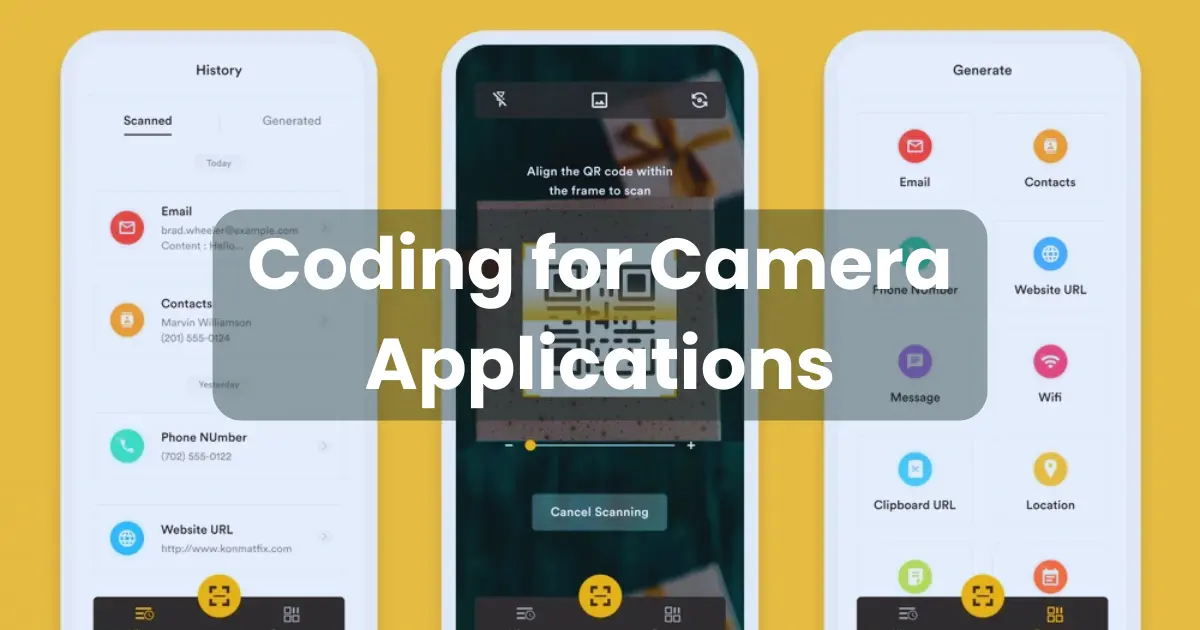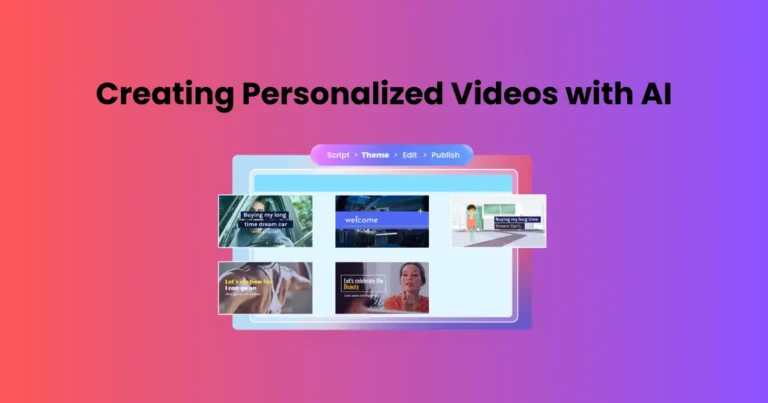Coding for Camera Applications: A Comprehensive Guide

Contents
- 1 Understanding Camera Applications
- 2 Programming Languages for Camera Applications
- 3 Essential Components of Coding for Camera Applications
- 4 Step-by-Step Guide to Coding for Camera Applications
- 5 Best Practices for Coding Camera Applications
- 6 Common Challenges and Their Solutions in Coding for Camera Applications
- 7 Future Trends in Camera Application Development
In today’s digital age, coding for camera applications plays a crucial role in developing innovative tools for photography, surveillance, augmented reality, and computer vision. As camera technology advances, the demand for high-performance, feature-rich applications continues to grow. By mastering the art of coding for camera applications, developers can create software that captures, processes, and enhances visual data efficiently. This article explores the essential techniques, tools, and best practices needed to build robust camera applications while maintaining optimal performance and usability.
Understanding Camera Applications
Camera applications are software programs designed to capture, process, and manipulate visual data from digital cameras. These applications are widely used in various fields, including photography, video streaming, surveillance, augmented reality, and computer vision. By coding for camera applications, developers enable devices to interact seamlessly with camera hardware, ensuring smooth image acquisition and advanced processing capabilities.
Moreover, camera applications often include features like autofocus, face detection, object recognition, and real-time video processing. These functionalities require efficient coding techniques to manage camera APIs, optimize performance, and handle high-resolution data. Therefore, understanding the core components and capabilities of camera applications is essential before diving into the development process.
Programming Languages for Camera Applications
When it comes to coding for camera applications, choosing the right programming language is crucial for performance, compatibility, and ease of development. Different languages offer unique strengths, making them suitable for specific types of camera-based projects. Let’s explore some of the most popular programming languages used in this field:

- Python: Known for its simplicity and extensive libraries like OpenCV, Python is widely used for image processing and computer vision. It’s ideal for prototyping and developing camera applications with machine learning capabilities.
- Java: As a primary language for Android development, Java is perfect for building mobile camera applications. Its compatibility with Android’s Camera API ensures smooth integration and efficient performance.
- Swift: For iOS camera applications, Swift offers powerful tools and frameworks like AVFoundation, making it easy to access and control camera hardware on Apple devices.
- C++: Renowned for its speed and efficiency, C++ is often used for performance-intensive camera applications. Libraries like OpenCV provide robust support for real-time image and video processing.
- JavaScript (with Web APIs): For web-based camera applications, JavaScript works seamlessly with WebRTC and HTML5, allowing real-time video streaming and image capture directly from a browser.
Selecting the right language depends on the platform, performance requirements, and features needed for your camera application. Each language brings unique advantages, ensuring a tailored approach to development.
Essential Components of Coding for Camera Applications
When coding for camera applications, understanding the key components is vital for creating efficient and feature-rich software. These components ensure smooth interaction between the application, camera hardware, and the visual data being processed. Let’s explore the most important elements:

1. Image Processing and Computer Vision
Image processing and computer vision lie at the heart of most camera applications. These technologies allow the application to interpret and manipulate visual data. Through libraries like OpenCV or TensorFlow, developers can apply techniques such as:
- Filtering and Enhancement: Adjusting brightness, contrast, and sharpness.
- Edge Detection: Identifying shapes and boundaries within an image.
- Object Recognition: Detecting and classifying objects in photos or videos.
2. Camera APIs and SDKs
Application Programming Interfaces (APIs) and Software Development Kits (SDKs) provide tools to interact with camera hardware. They simplify camera access, control, and data capture, ensuring developers can focus on high-level functionality. Popular choices include:
- Android Camera2 API: For advanced camera features on Android devices.
- AVFoundation (iOS): Apple’s framework for capturing and processing media.
- OpenCV: A cross-platform library offering extensive computer vision capabilities.
3. Hardware Integration
Efficient coding for camera applications often involves working directly with camera hardware. Developers must manage camera resolution, frame rates, and sensor data to ensure smooth performance. Techniques like buffer management and low-level hardware control optimize responsiveness and reduce lag.
By combining these essential components, developers can build robust and versatile camera applications capable of delivering high-quality visual experiences.
Step-by-Step Guide to Coding for Camera Applications
Creating a fully functional and efficient camera application requires careful planning and execution. By following a structured approach, developers can ensure smooth performance and feature-rich capabilities. Let’s walk through the essential steps involved in coding for camera applications.

1. Setting Up the Development Environment
Before writing any code, it’s important to prepare the right tools and environment:
- Choose a Programming Language: Python, Java, Swift, or C++ based on your platform and needs.
- Install Necessary Libraries: For Python, libraries like OpenCV and NumPy are essential; for Android, CameraX or Camera2 API is commonly used.
- Set Up an IDE: Use an Integrated Development Environment like PyCharm, Android Studio, or Xcode for efficient coding and debugging.
2. Processing Images and Videos
Once the camera feed is accessible, processing the visual data becomes essential:
- Apply Filters: Adjust brightness, contrast, and saturation.
- Edge Detection: Use algorithms like Canny or Sobel for identifying object boundaries.
- Face and Object Recognition: Implement pre-trained models for advanced analysis.
adds interactivity and intelligence to your camera application:
3. Enhancing Performance and Efficiency
For better user experience, optimizing your application’s speed and responsiveness is critical:
- Reduce Frame Lag: Use multithreading for image capture and processing.
- Optimize Resolution: Balance between image quality and processing speed.
- Implement Caching: Store frequently accessed data to improve performance.
By following this step-by-step approach, coding for camera applications becomes a streamlined process. Each phase builds on the last, ensuring your application is both functional and efficient.
Best Practices for Coding Camera Applications
To create high-performing and user-friendly camera applications, developers must follow best practices that enhance functionality, efficiency, and reliability. Let’s explore some essential strategies for coding for camera applications effectively.

1. Optimize Performance and Efficiency
- Minimize Latency: Use multithreading to handle image capture and processing separately, reducing delays.
- Balance Resolution and Speed: High-resolution images offer quality, but they slow down processing—find the right balance for your app’s needs.
- Compress Images Smartly: Reduce file sizes without compromising quality for faster uploads and lower storage use.
2. Ensure Compatibility Across Devices
- Test on Multiple Devices: Different devices have varying camera capabilities—ensure your app works smoothly on various screen sizes and hardware.
- Use Cross-Platform Libraries: Tools like OpenCV or TensorFlow ensure consistent behavior across different operating systems.
3. Maintain Clean and Modular Code
- Follow the DRY Principle: “Don’t Repeat Yourself” by writing reusable functions and avoiding code duplication.
- Use Clear Naming Conventions: Descriptive variable and function names make your code more readable and easier to maintain.
- Organize Code into Modules: Separate camera access, image processing, and UI into distinct modules for clarity and scalability.
4. Prioritize User Privacy and Security
- Request Permissions Properly: Always ask for camera access permissions clearly and only when necessary.
- Secure Data Transmission: Encrypt image and video data, especially when sending files over the internet.
- Avoid Unnecessary Data Collection: Respect user privacy by only capturing and storing essential data.
5. Implement Robust Error Handling
- Handle Camera Failures Gracefully: Ensure your app provides user-friendly error messages if the camera is inaccessible.
- Validate Inputs and Outputs: Check the integrity of captured images and video streams to avoid crashes.
- Use Try-Except Blocks: Catch and manage exceptions to prevent app crashes during unexpected failures.
By following these best practices, coding for camera applications becomes not only more efficient but also results in a smoother, more reliable user experience. These strategies ensure your application performs well while maintaining security, compatibility, and ease of maintenance.
Common Challenges and Their Solutions in Coding for Camera Applications
When coding for camera applications, developers often face technical and performance-related challenges. Identifying these issues early and applying effective solutions ensures a smoother development process and a better user experience. Let’s explore some common obstacles and how to overcome them.

1. High Latency in Camera Feed
Challenge: A noticeable delay between real-time events and their appearance on the screen can frustrate users.
Solution:
- Use Multithreading: Separate image capture and processing to avoid bottlenecks.
- Optimize Frame Rate: Reduce the resolution or frame rate for faster processing without compromising quality.
- Implement Hardware Acceleration: Leverage GPU capabilities for intensive image processing tasks.
2. Compatibility Issues Across Devices
Challenge: Different devices have varying camera hardware and software configurations.
Solution:
- Test on Multiple Devices: Ensure your app works seamlessly across different screen sizes and camera specs.
- Use Adaptive APIs: Libraries like OpenCV or CameraX provide cross-platform support and device adaptability.
- Handle Permissions Correctly: Always check for and request camera access permissions dynamically.
3. Poor Image Quality
Challenge: Blurry, overexposed, or low-resolution images degrade the user experience.
Solution:
- Enable Auto-Focus and Exposure Control: Use built-in camera API settings for better clarity.
- Apply Image Processing Algorithms: Enhance images with contrast adjustment, noise reduction, and sharpening techniques.
- Optimize Lighting Conditions: Prompt users to capture images in well-lit environments when possible.
4. Privacy and Security Concerns
Challenge: Capturing and transmitting visual data raises privacy and security issues.
Solution:
- Encrypt Data: Use secure protocols like HTTPS and AES encryption for data transmission and storage.
- Request Permissions Transparently: Clearly inform users why camera access is needed.
- Minimize Data Storage: Only capture and save the necessary visual information.
5. Crashes and Unhandled Errors
Challenge: Sudden app crashes due to camera hardware failures or software bugs can disrupt the user experience.
Solution:
- Implement Error Handling: Use try-except blocks and fail-safe mechanisms to manage unexpected issues.
- Validate Inputs and Outputs: Ensure captured data is correctly formatted and processed.
- Monitor Resource Usage: Avoid memory leaks and excessive CPU usage by properly releasing resources after use.
Addressing these challenges efficiently makes coding for camera applications more robust and ensures users get a seamless, high-quality experience. With these solutions, your camera app will be better optimized, more reliable, and more secure.
Future Trends in Camera Application Development
As technology evolves, the field of coding for camera applications continues to advance, bringing new possibilities and innovative features. Let’s explore the key trends shaping the future of camera application development.

1. AI-Powered Image Processing
Artificial Intelligence is revolutionizing camera applications by making them smarter and more efficient:
- Real-Time Object Detection: AI models can identify and track objects instantly within a camera feed.
- Enhanced Image Quality: AI-driven algorithms adjust lighting, sharpness, and color correction automatically.
- Face and Gesture Recognition: Advanced recognition capabilities improve user interaction and security.
2. Augmented Reality (AR) Integration
AR features are becoming a standard in modern camera applications:
- Interactive Filters: Popular in social media apps, AR overlays add creative elements to live camera feeds.
- Virtual Try-Ons: E-commerce platforms use AR to let customers see products like glasses or makeup in real-time.
- 3D Object Placement: AR enables realistic visualization of objects in a physical space through the camera.
3. Advanced Computational Photography
Computational techniques enhance camera functionality beyond traditional imaging:
- Night Mode and HDR: Algorithms merge multiple exposures to create well-lit, detailed images.
- Depth Mapping: Cameras generate 3D models by analyzing object distance and positioning.
- Super Resolution: AI upsamples images to improve quality without increasing file size.
4. Cloud-Based Camera Applications
Cloud integration is transforming how camera apps handle storage and processing:
- Real-Time Streaming: Cloud services support fast and reliable video streaming.
- Remote Access and Control: Users can manage camera feeds from different devices and locations.
- Scalable Storage Solutions: High-resolution videos and images are securely stored without device limitations.
5. Privacy-Focused Features
As privacy concerns grow, camera apps are adopting more security measures:
- On-Device Processing: Sensitive data like face recognition stays on the device without cloud involvement.
- Encrypted Media Files: End-to-end encryption protects images and videos during storage and sharing.
- Permission Control: Granular settings let users manage access to camera functions.
By embracing these trends, developers coding for camera applications can create smarter, safer, and more user-friendly experiences. Staying ahead of these innovations ensures your app remains competitive and meets evolving user expectations.
Conclusion
Coding for camera applications offers incredible opportunities to create innovative and interactive tools, but it also requires a thoughtful approach. From choosing the right programming languages to implementing essential components and following best practices, every step impacts the performance and usability of the final product.
By overcoming common challenges and staying updated with future trends like AI integration, AR features, and cloud-based solutions, developers can build powerful and efficient camera apps. Prioritizing security, performance, and cross-device compatibility ensures a seamless user experience. As camera technology continues to evolve, the demand for well-designed, feature-rich applications will only grow. Whether you’re building a simple photo app or a complex real-time streaming platform, mastering the art of coding for camera applications positions you at the forefront of this exciting field.






